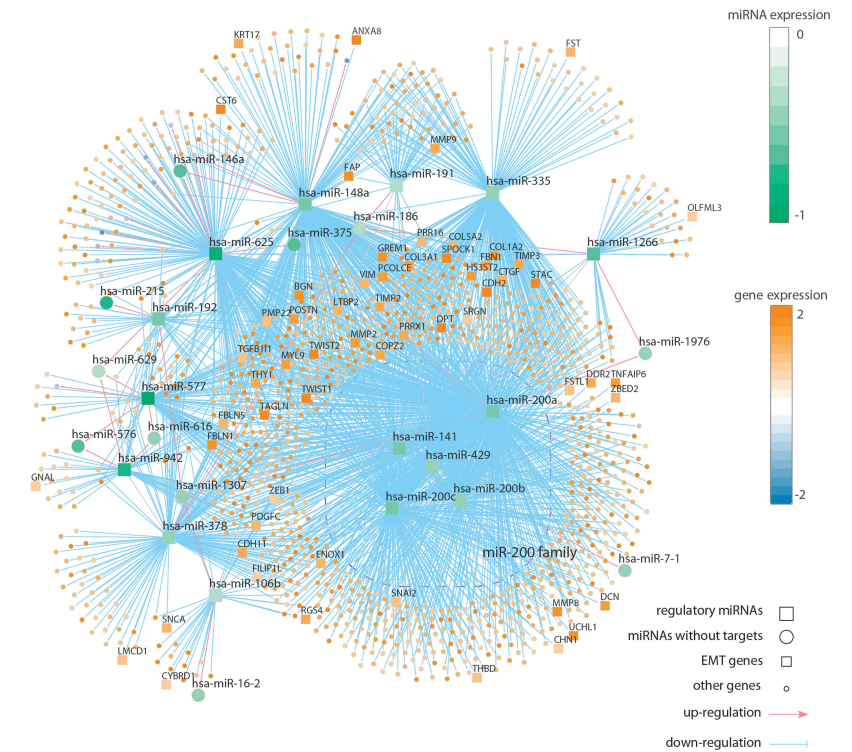May 1731, 17118

Authors
Fessler E, Jansen M, De Sousa E Melo F, Zhao L, Prasetyanti PR, Rodermond H, Kandimalla R, Linnekamp JF, Franitza M, van Hooff SR, de Jong JH, Oppeneer SC, van Noesel CJM, Dekker E, Stassi G, Wang X*, Medema JP*, and Vermeulen L*.
Oncogene 2016, doi:10.1038/onc.2016.134
Abstract
Colorectal cancer (CRC) is a heterogeneous disease posing a challenge for accurate classification and treatment of this malignancy. There is no common genetic molecular feature that would allow for the identification of patients at risk for developing recurrences and thus selecting patients who would benefit from more stringent therapies still poses a major clinical challenge. Recently, an international multicenter consortium (CRC Subtyping Consortium) was established aiming at the classification of CRC patients in biologically homogeneous CRC subtypes. Four consensus molecular subtypes (CMSs) were identified, of which the mesenchymal CMS4 presented with worse prognosis signifying the importance of identifying these patients.
Despite the large number of samples analyzed and their clear association with unifying biological programs and clinical features, single-driver mutations could not be identified and patients are heterogeneous with regard to currently used clinical markers. We therefore set out to define the regulatory mechanisms underlying the distinct gene expression profiles using a network-based approach involving multiple molecular modalities such as gene expression, methylation levels and microRNA (miR) expression. The miR-200 family presented as the most powerful determinant of CMS4-specific gene expression, tuning the majority of genes differentially expressed in the poor prognosis subtype, including genes associated with the epithelial-mesenchymal transition program.
Furthermore, our data show that two epigenetic marks, namely the methylation of the two miR-200 promoter regions, can identify tumors belonging to the mesenchymal subtype and is predictive of disease-free survival in CRC patients. Importantly, epigenetic silencing of the miR-200 family is also detected in epithelial CRC cell lines that belong to the mesenchymal CMS. We thus show that determining regulatory networks is a powerful strategy to define drivers of distinct cancer subtypes, which possess the ability to identify subtype affiliation and to shed light on biological behavior.

